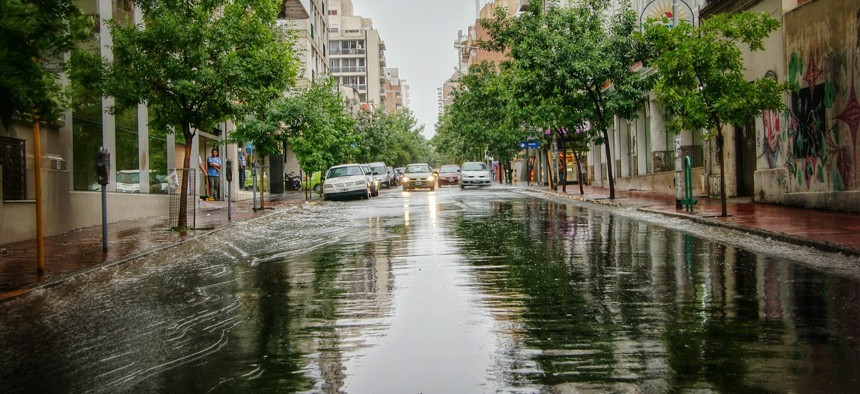The coastal cities expecting the greatest sea-level rise

GettyImages/ Andres Ruffo / EyeEm
A new report from NOAA describes the vulnerabilities coastline communities are facing from climate change and the effects of sea level rise.
By 2050, U.S. coastlines can expect sea levels to rise by the same amount that they did over the entire 20th century, experts warn.
In a report published Feb. 15 by the National Oceanic and Atmospheric Administration, climate scientists predict that America’s shoreline would average a 10 to 12 inch rise over the next 30 years. The U.S. rate of sea level rise will be slightly higher than the global average.
The Sea Level Rise Technical Report estimates that the western Gulf of Mexico coast, which includes parts of Louisiana and Texas, will be hit the hardest due to high rates of coastal subsidence, or sinking; the region will see a relative sea level rise of a foot and a half, or 0.45 meters. The eastern Gulf Coast will experience a similar increase, expecting a 0.35 to 0.4 meter sea level rise.
Based on NOAA’s projections, these areas will see the highest sea level rise from 2005 to 2060, in descending order:
- Galveston Pier 21,Texas (0.77 m)
- St. Petersburg, Fla.(0.7 m)
- Pensacola, Fla. (0.66 m)
- Sewells Point, Va. (0.56 m)
- Virginia Key, Fla. (0.55 m)
- The Battery in New York City (0.5 m)
- San Francisco (0.46 m)
- Los Angeles (0.41 m)
- Honolulu (0.39 m)
- Seattle (0.29 m)
Some localities have already been trying to mitigate these impending climate crises with the help of data and local partnerships. Since 2018, city officials in Virginia’s Hampton Roads region, which includes Sewells Point, have been developing a hydrodynamic modeling system to combat tidal flooding and coastal storms.
Using sensors that measures water levels and wind speeds, researchers put together a crowdsourced flood prediction model called Stormsense, a tool that allows users to determine types of flooding, and the areas that are at highest risk.
“This is a global wake-up call and gives Americans the information needed to act now to best position ourselves for the future,” NOAA Administrator Rick Spinrad said. “As we build a Climate Ready Nation, these updated data can inform coastal communities and others about current and future vulnerabilities in the face of climate change and help them make smart decisions to keep people and property safe over the long run.”





